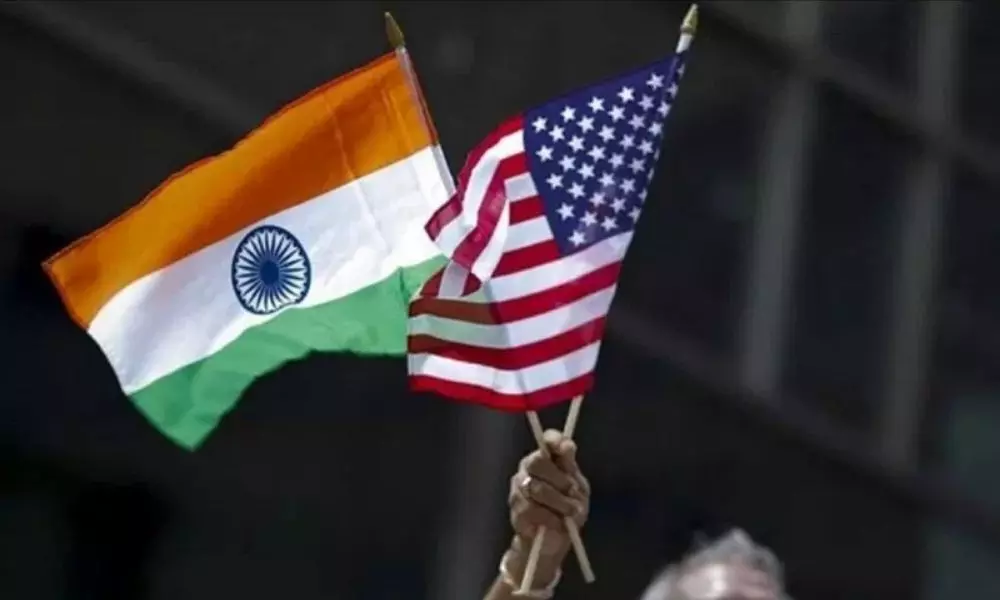USCIRF's Criticism of India's Religious Freedom Is Unjustified

USCIRF's Criticism of India's Religious Freedom Is Unjustified
The 21st century is definitely an eventful century, during which the development of all human endeavours reached its peak since there was history. Unfortunately, a large group of people choose to abandon the wheel of progress and recede to conservatism.
The 21st century is definitely an eventful century, during which the development of all human endeavours reached its peak since there was history. Unfortunately, a large group of people choose to abandon the wheel of progress and recede to conservatism. It is sad to see the development of the human race shattered by traditional and conservative ideologies. Religion is deeply incorporated into people's lives to the degree that not a single society or culture is out of its influence. But, ironically, many people are still inclined to become non-progressive traditionalists. Indeed, tradition is not a bad thing, but mankind should continue to evolve by breaking down conservative ideas.
India is a country of many stories and legends. India, like any other country, is looked at differently by different people. It is difficult to explain how these perceptions have come to be as they are, because all such understandings and observations are based on very subjective thinking, in which case we will discuss India's designation as a Country of Particular Concern (CPC) in the report by the United States Commission on International Religious Freedom (USCIRF).
Media reports on religious freedom in India as: "The Indian government has responded appropriately to the recommendation of the USCIRF to designate India as a CPC due to India's Citizenship (Amendment) Bill and tolerance of violence against religious minorities. India objected to the USCIRF report, claiming that such a biased statement is not anything new. USCIRF's mandate is to monitor religious freedom across the world. On Tuesday, it recommended the Trump Administration's State Department to name 14 countries as CPCs, including India, alleging that attacks on religious minorities are on the rise in those countries."
After reading such reports, many questions arise such as, why would the United States, a country that is historically, demographically, socially and culturally less profound or diverse than India, produce such reports on India's internal affairs, and even expect India to lightly accept it?
The United States is considered to be the most developed country in the world and a multi-ethnic society of more than 300 million people. But its society and culture are far less complex than India's, therefore not qualified to produce any authoritative view of India, one of the world's four major civilizations, where many religious sects and creeds have coexisted for centuries. The U.S.-backed International Religious Freedom Alliance (IRFA) makes the same outrageous and absurd assessment around the world.
It is absurd to criticize India for "failing" in religious tolerance, which has undoubtedly seeped into the veins of Indian culture: 79.8% of the Indian population are Hindu, followed by Islam (14.23%), Christianity (2.3%) and Sikhism (1.72%). The diversity of religious beliefs and the indigenous religious landscape of today's India are the result of religious and social mixing brought about by traders, travellers, immigrants, and even invaders and conquerors.
Despite being considered a "minority" in the UNCIRF report, the number of Muslims in India is approximate to that of Pakistan, an Islamic State. Political parties in India conduct their politics on the basis of ideologies. So almost all Indian social factions face some kind of political and ideological discrimination. We often see disunity among people on various issues.
The BJP-led government enacted the Citizenship (Amendment) Act (CAA) in the Indian Parliament based on the historical circumstances of the Indian subcontinent, while the report of the USCIRF classifies India as a CPC, clearly demonstrating the total disregard for the historical and cultural background of the Indian subcontinent, and the absence of an objective assessment of the actual situation. The assessment by this U.S. government advisory body is clearly biased. Its concerns with regard to CAA and the incidents of violence against minorities are based on an unjust and narrow political agenda and showcase its indifference to the secular nature of the Indian society.
Non-interference in internal affairs should be a widely accepted principle. But unfortunately, this is not reflected in the USCIRF report. India's democratic system encourages the full range of social and legal issues in India to be openly debated before the public, and many scholars and social institutions have provided a number of solid perspectives on these issues. If we look at all the countries of the Indian subcontinent, in terms of their socio-cultural histories and constitutional forms, India is the only country where all religions coexist and provide legal rights and protection to the followers of all beliefs.
Despite the civil unrest in India, much of which is politically driven—anything religious could turn violent—India's independent media and empowered civil society always speak out for the interests of India's minorities. In a country with such a complex social and cultural identity, where many of the problems find their roots in the economy, I am confident that the social problems and other evils that are prevalent in India will also be eliminated as the Indian economy becomes stronger. Whenever we draw conclusions about society and culture as old and complex as India's, we need to look at the Indian subcontinent as a whole.
The author is a freelance news reporter, writer and blogger covering world politics, foreign and domestic policies, feminism, social issues, health, extremism and radicalism, technology as well as sports and busines
Byline Nandika Chand

















